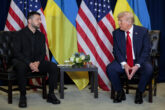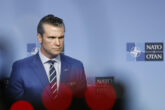January 03, 2019
A Question of Statecraft
Any Western policymaker working in the field of national security over the past decade has had to grapple with the same disheartening reality: the structures and processes that governments created decades ago to analyze threats and coordinate policy responses are ill-equipped to cope with today’s fast changing geostrategic landscape. These days governments must play what international relations scholar Joe Nye calls “three-dimensional chess,” requiring policymakers to address military, economic, and transnational challenges simultaneously. Whether it is Chinese anti-access/area-denial strategies and capabilities in the South China Sea or the Russian use of energy and cyber-attacks as instruments of coercion, asymmetric warfare is presenting unique challenges not only to national security professionals but also to government ministries, which were designed for a different era.
National governments have responded to these changes by developing new strategies, policies, and tools. The homepages of Western foreign offices and ministries of defense are awash in white papers and national security strategies that outline how the world of foreign policy is evolving and why a pan-governmental approach that draws from the respective strengths of multiple government agencies is needed. Less has been done, however, in regards to statecraft. National security professionals know full well that even the best, most innovative strategies and policies will fail if they aren’t accompanied by a process that enables them to be realized. Yet statecraft—the machinery that ensures that national governments can efficiently and effectively execute policy—rarely garners as much attention.
Read the full article in Berlin Policy Journal.
More from CNAS
-
What’s Driving President Trump’s New Confidence in Ukraine’s War Effort
President Trump dramatically declared on social media that he now believes that Ukraine can reclaim all its land from Russia, which he described as a paper tiger. From the Ova...
By Richard Fontaine
-
Europe Must Counter Cheap Drones with Cheap Solutions, Ex-NATO Commander Says
NATO must find cheaper ways to counter the growing threat of Russian drone incursions, the former Supreme Allied Commander for Europe, Gen. Philip Breedlove, has said. Speakin...
By General Philip M. Breedlove
-
Brussels Sprouts LIVE: Europe with Less U.S.: Preventing Russia Opportunistic Aggression in Europe
Despite the degradation of Moscow’s military in Ukraine, senior western officials estimate that it could reconstitute its forces within two to five years. A new CNAS report co...
By Andrea Kendall-Taylor & Jim Townsend
-
‘The U.S. Has Got to Get Involved’: Townsend on NATO Boosting Polish Air Defences
Jim Townsend, adjunct senior fellow at the Center for a New American Security, discusses what actions NATO countries need to take amidst Russia’s incursions of NATO airspace.W...
By Jim Townsend




